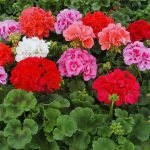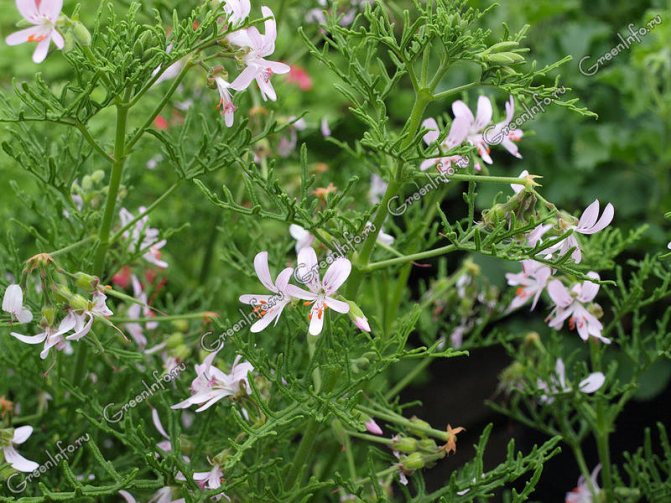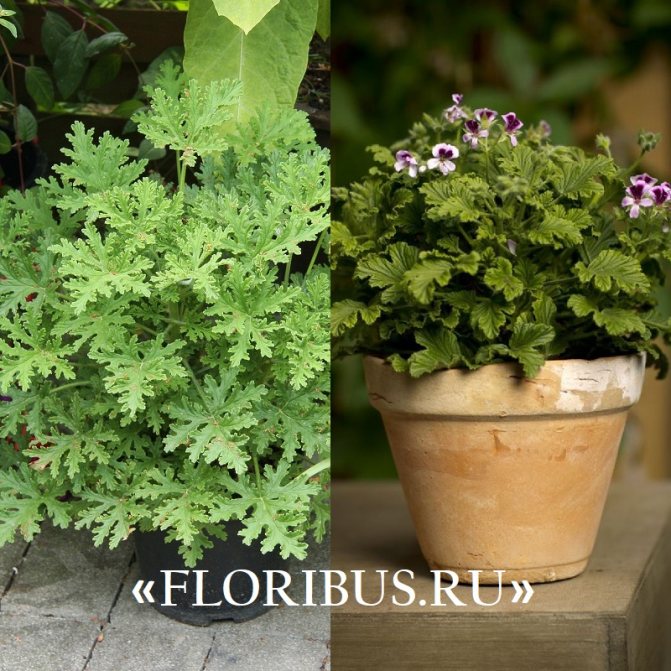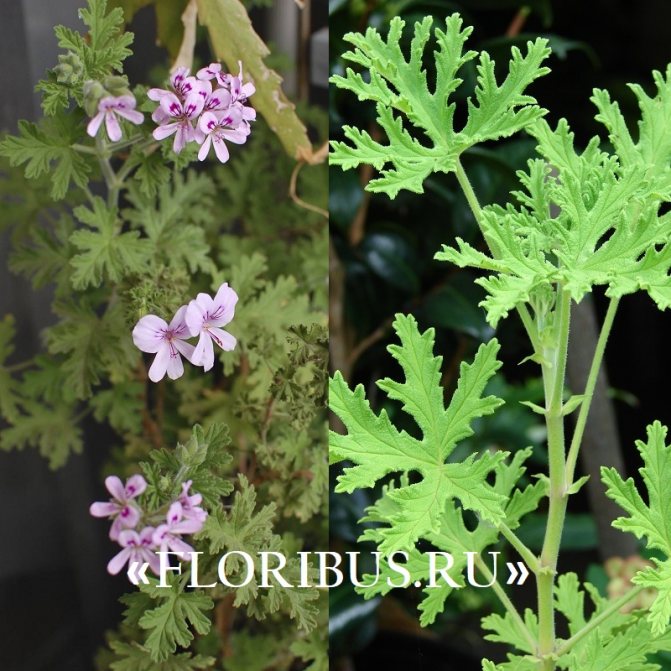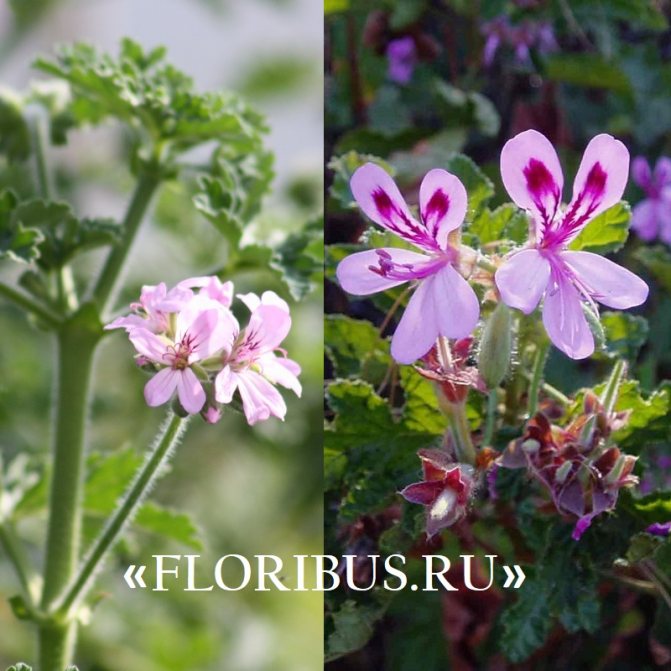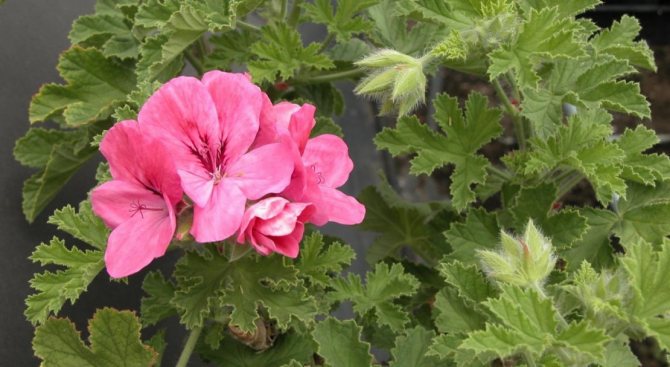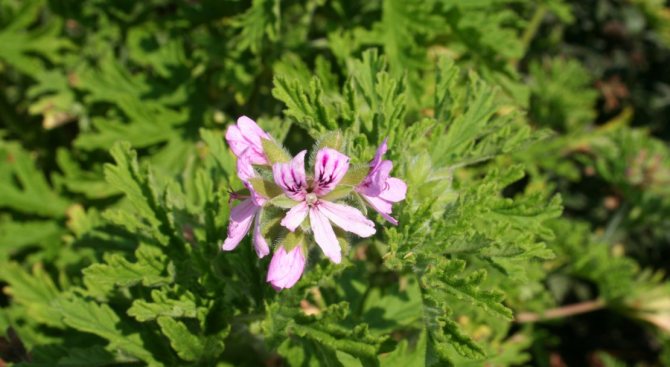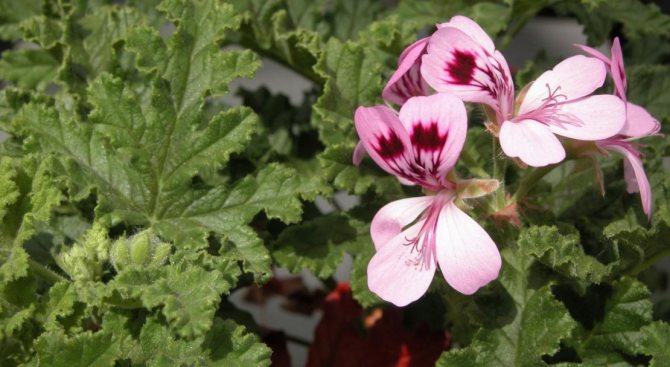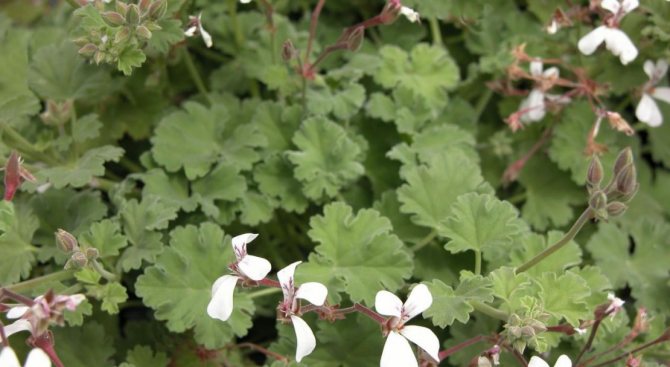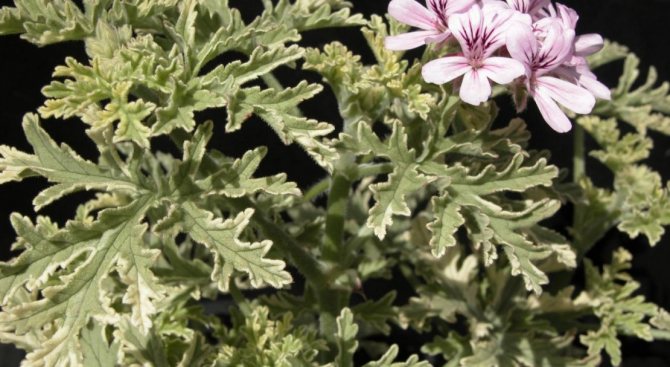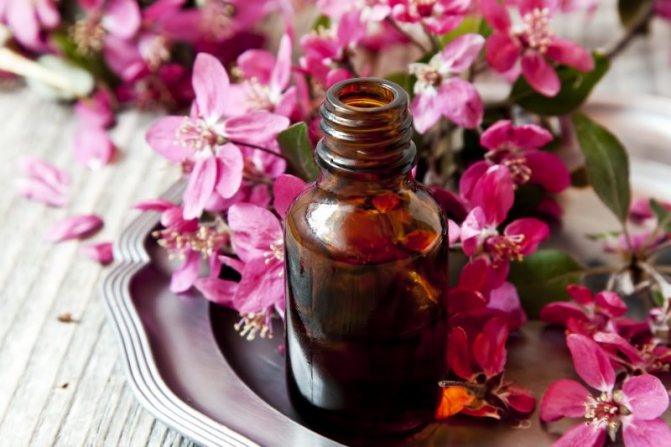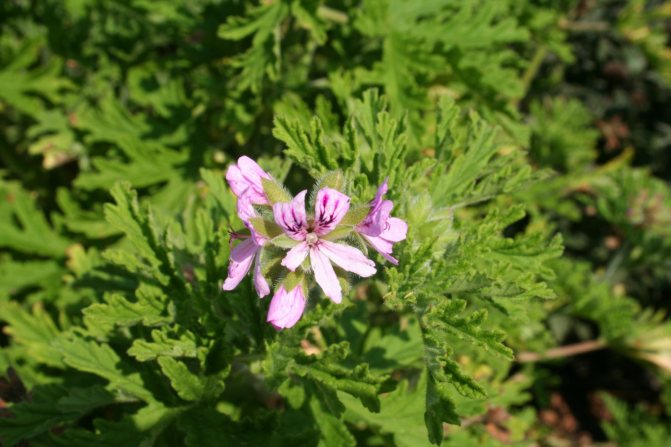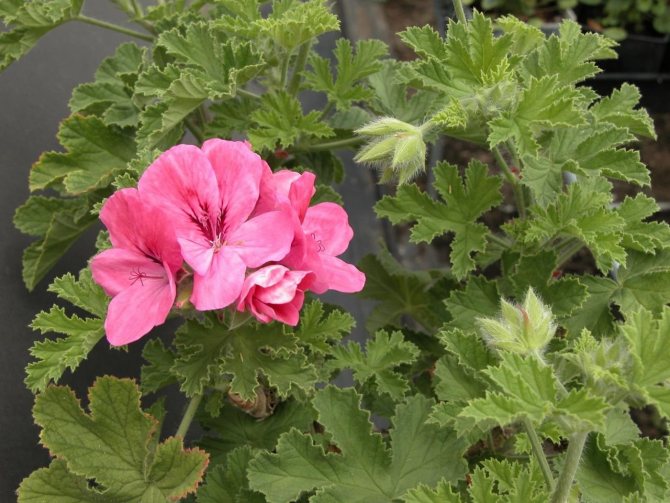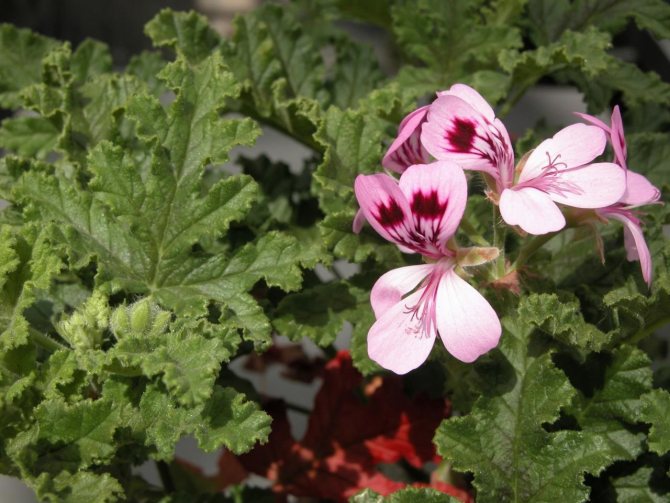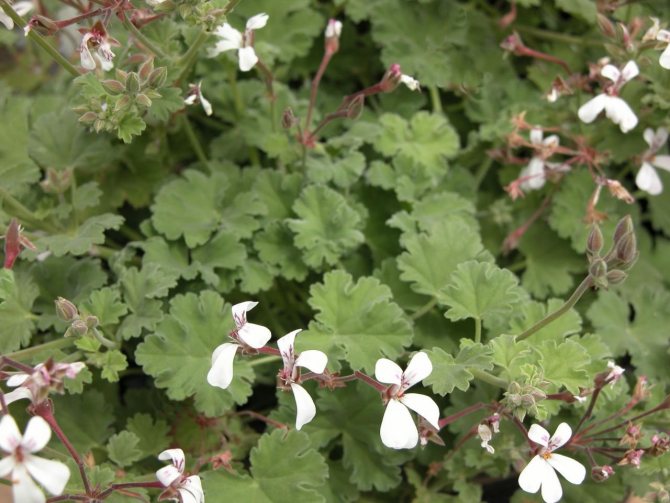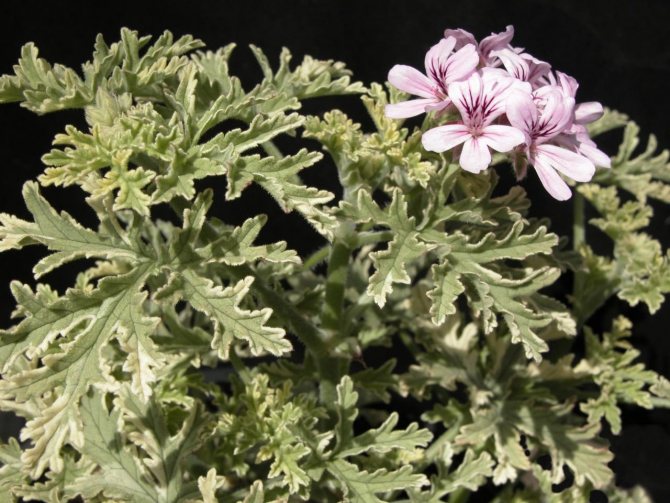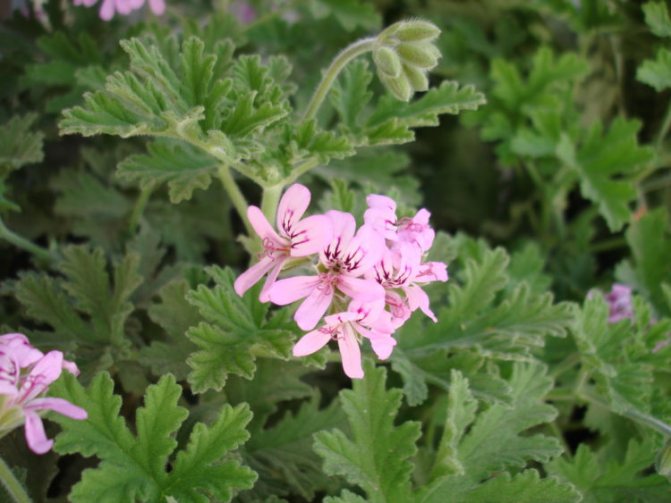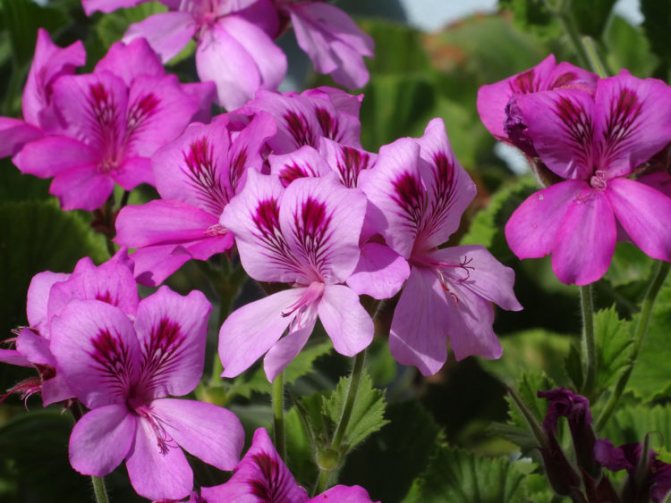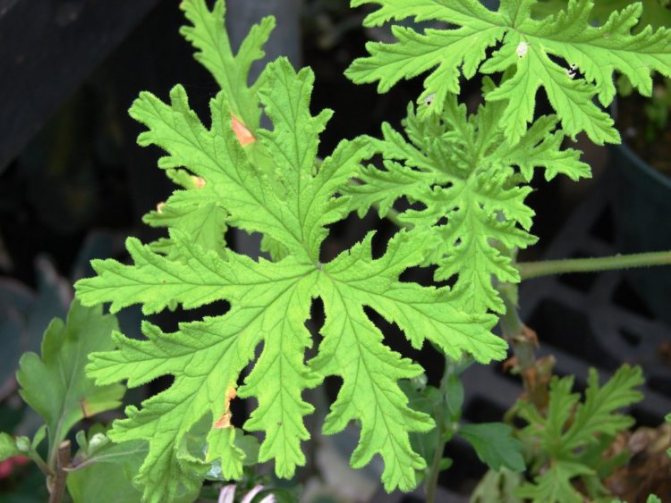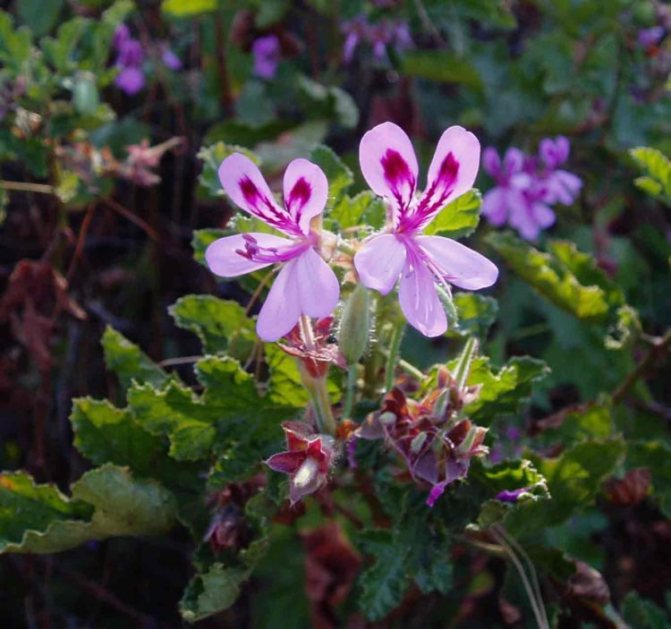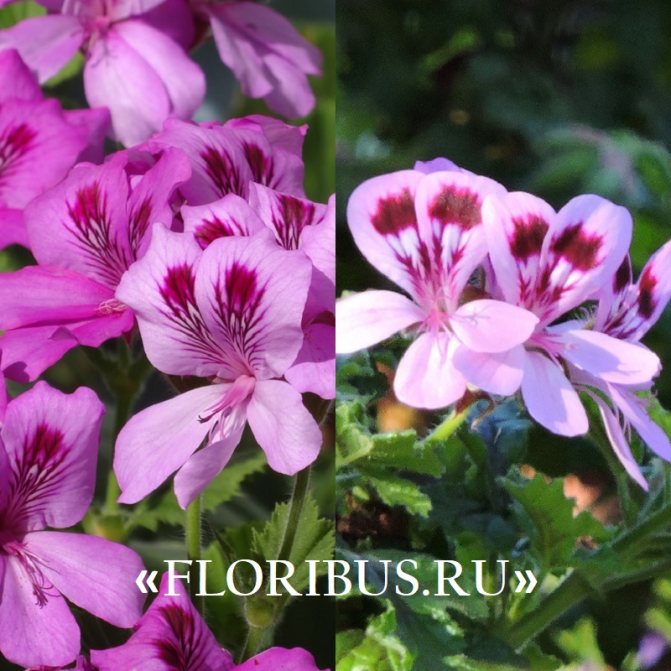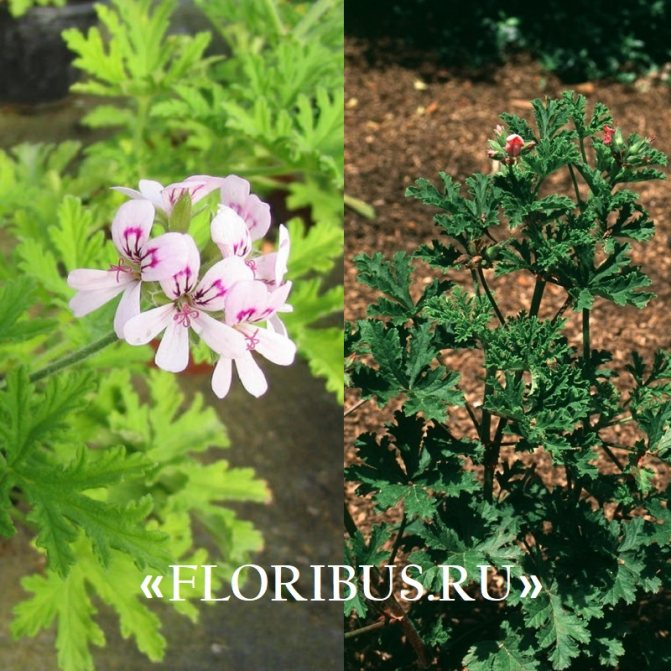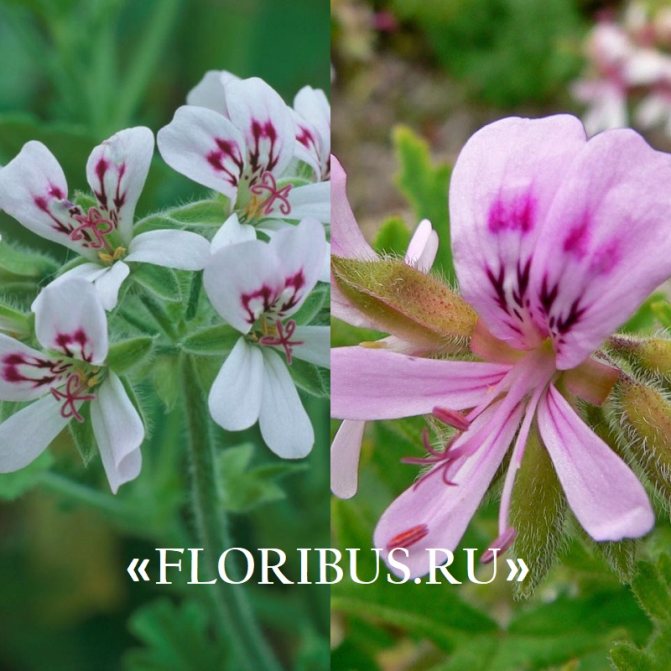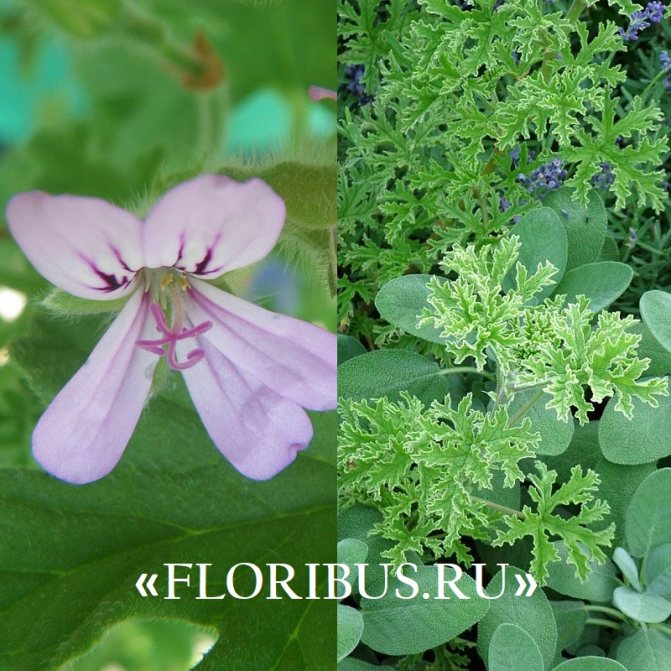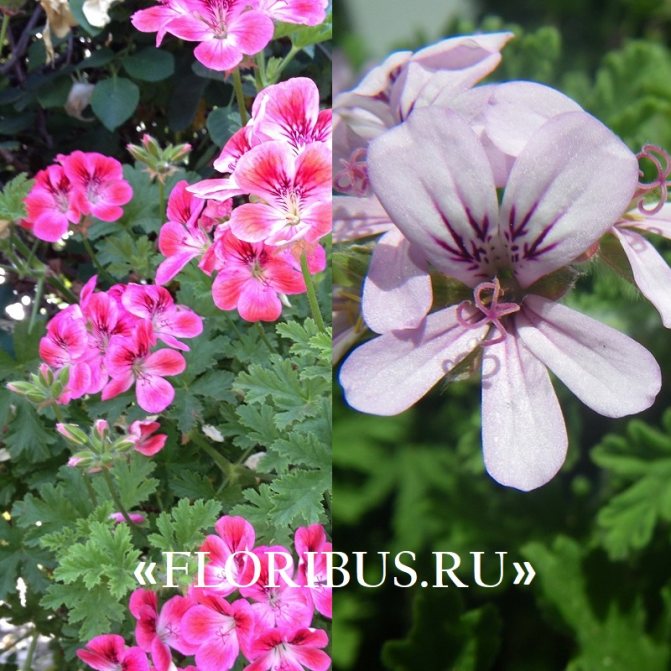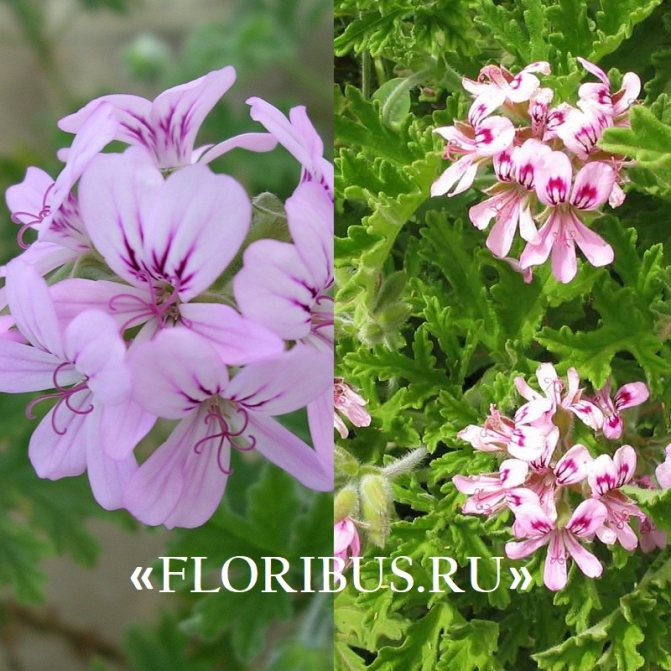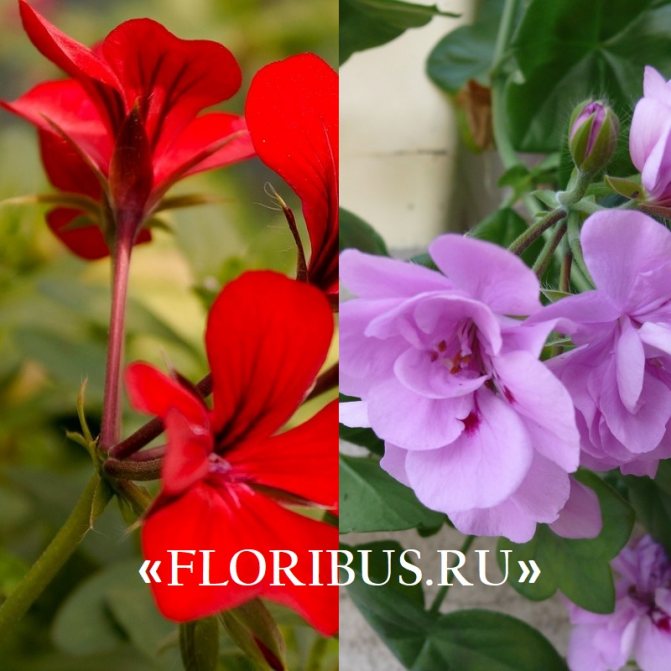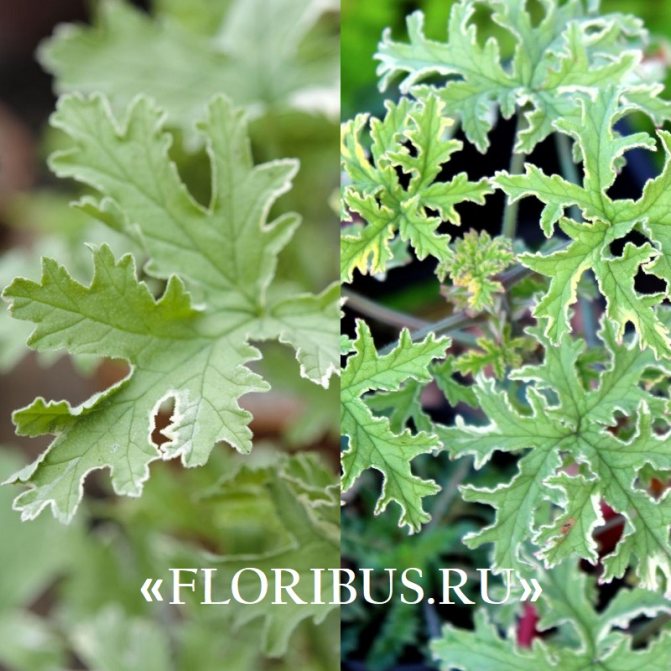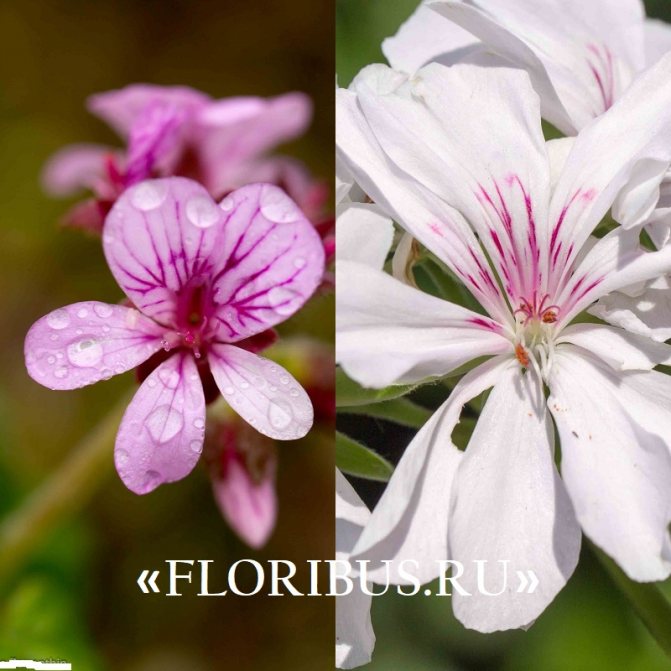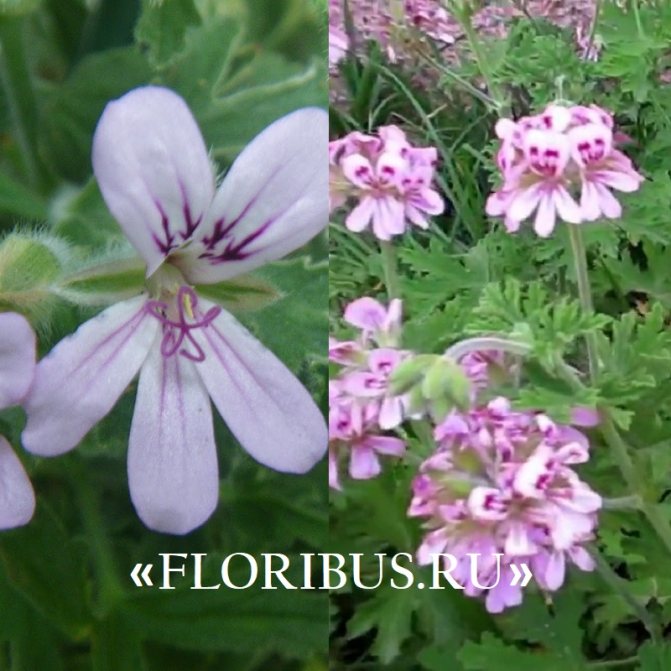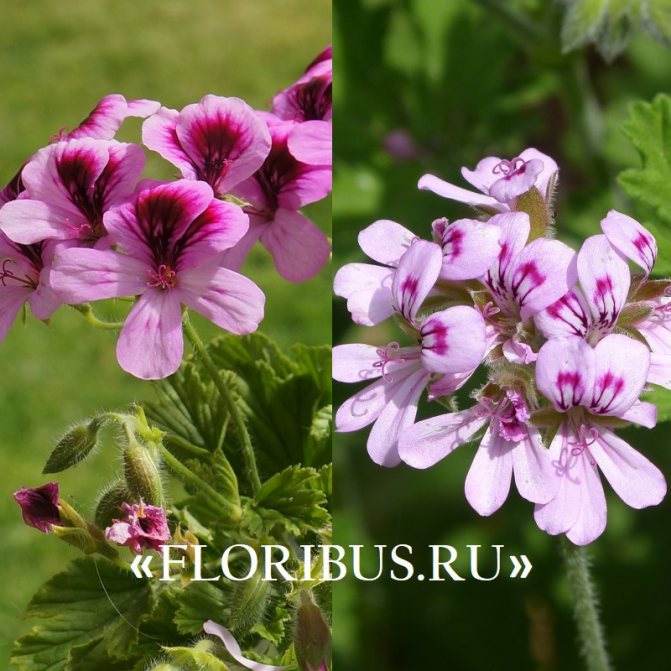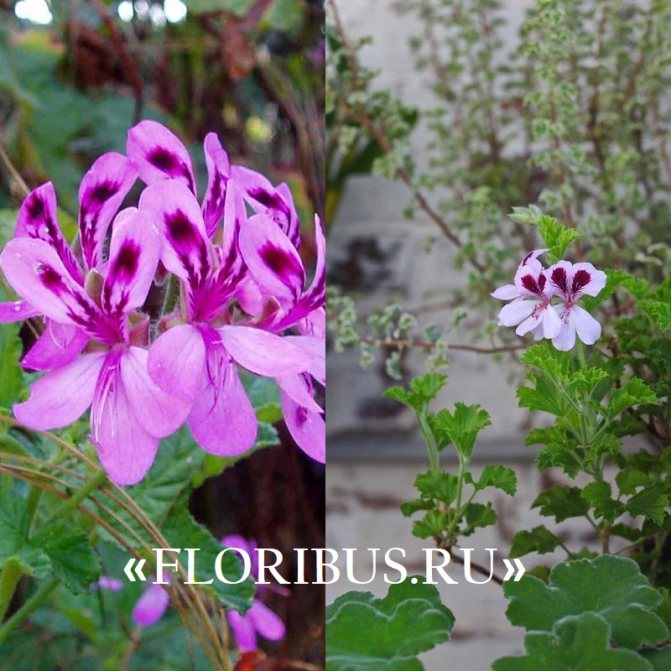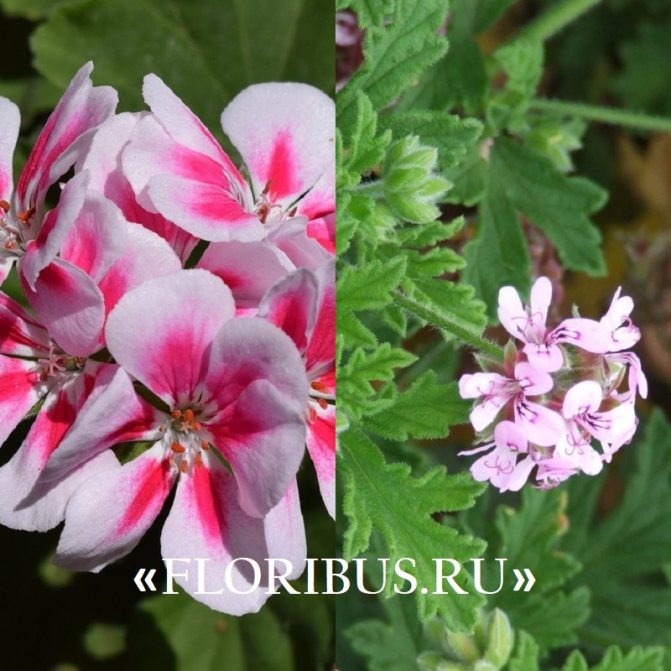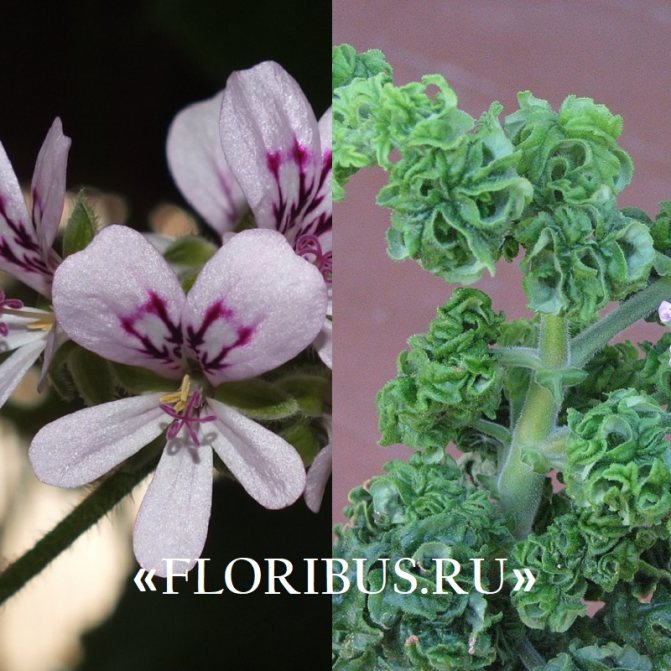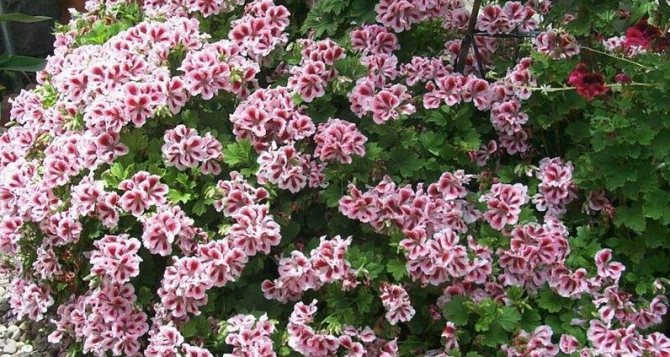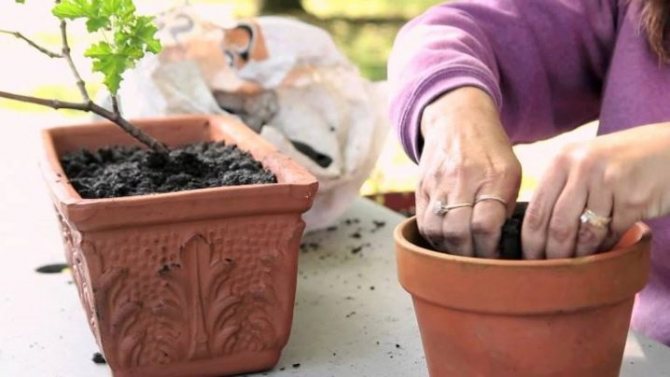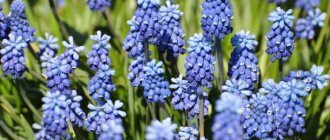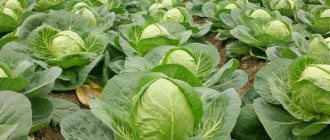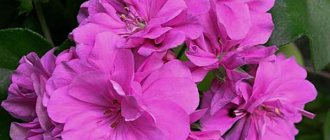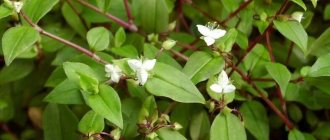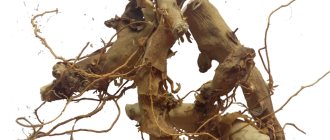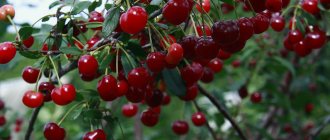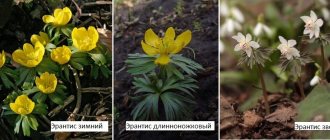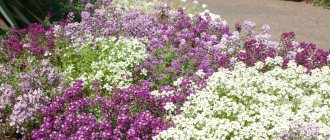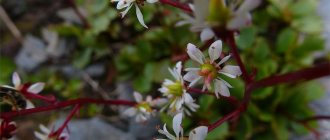Geranium is an unpretentious plant grown in flower beds and rooms. It has a large number of colors, thanks to which it is used in design.
Geranium varieties
There are many types of geranium: professional gardeners number at least 45 of them. There are about 70 thousand of all varieties, they can be called the most exotic names. All of them differ in terms of zonal growing conditions, characteristics of care, flowering time, height, leaves and flowers, and other properties. Some of them can curl.
Botanical description and history of origin
Homeland of scented geranium - South America... You can meet the plant in South Africa, Mozambique, Zimbabwe. It was brought to Europe in the 17th century. Geranium took root in Great Britain, where nurseries of this aromatic culture were created. In Russia, the flower appeared in the 17-19 centuries, where it was grown in the greenhouses of noble people.
The fragrant geranium has gained worldwide distribution due to its unpretentiousness and adaptation to new local conditions. The aromatic plant can be grown in pots and containers. In summer, it is used to decorate terraces, paths, flower beds, mixborders.
What is this plant?
A fragrant perennial plant from the geranium family originated from South Africa. The branched bush has a developed nodular rhizome and strong straight stems.
Unlike the geranium that everyone is used to seeing "on grandmother's windowsills," the flowers of Рelargonium graveolens are inconspicuous and small, but the leaves are very decorative: palmate-lobed, covered with fine villi.
At the lightest touch of a leaf, geranium exudes a strong, unlike anything else aroma, thanks to phytoncides useful for humans.
You can read more about fragrant geranium here, and learn about the use of the plant in folk medicine and its beneficial properties in this material.
Check out the photo of geranium further:
What is it and characteristics of appearance
Scented geranium is a perennial, which looks like a branched bush 1 m high. The plant has a well-developed root system. The leaf plate is bright green, and the flowers are small and have a pale pink color. Is there a geranium that doesn't bloom? Some varieties of fragrant geranium are not blooming, but they look attractive due to the decorative appearance of the leaves and their pleasant aroma. After flowering, a fruit-box is formed, in which the seeds ripen.
The unusual smell of geranium is the result of the presence of small glands that are located on the outside and inside of the leaf blade. They look like fine hairs. The glands contain essential oil. The scent spreads when the leaves are touched. Simply rub them with your hands to create a persistent aroma of rose, lemon, mint or cinnamon.
Fragrant geranium spreads phytoncides in the room, which have an antimicrobial effect and normalize sleep. The leaves of the most fragrant indoor plants contain essential oils, flavonoids, organic acids, which are widely used in medicine, cooking and perfumery.
More information about the medicinal and beneficial properties of fragrant geranium, as well as contraindications and use of the plant can be found here.
Pelargonium and geranium - the same thing or not
Diseases of geranium, geranium leaves turn yellow and dry - what to do?
Pelargonium and geranium are very similar in appearance. However, they differ:
- they cannot be crossed because they are genetically different;
- geranium comes from the northern regions, so it tolerates frost well;
- pelargonium is an inhabitant of southern countries, in winter it should be in a greenhouse or at home;
- Pelargonium is grown on balconies, geranium can feel great in the garden, that's the difference.
The unpretentiousness of the geranium, its high decorative qualities led to the wide distribution of the plant among flower growers. Properly selected conditions for its growth make it possible to enjoy beautiful and long-lasting flowering.
Popular varieties and their photos
Varieties of scented geranium differ in leaf shape, aroma and color shade. The most popular types of odorous geraniums, as well as photos of plants, are discussed below.
Lady plymouth
It is one of the first varieties to be produced in the UK. It has gray-green leaves that are dissected and have white edging around the edges. The flowers are single and small, pale lilac in color. The plant emits a rose scent.
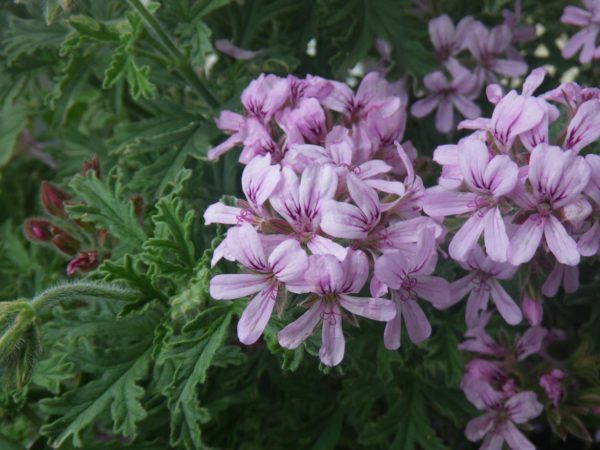
Royal oak
The plant has carved leaves, green in color with brown areas. The flowers are pale pink with burgundy strokes. The aroma is forest freshness.
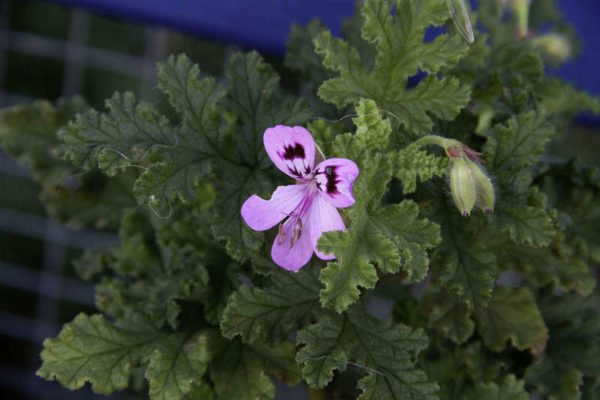

Pungent peppermint
This fragrant plant develops well in indoor conditions. It has carved leaves of a gray-green color. The buds are pink and small. Spreads a mint scent.
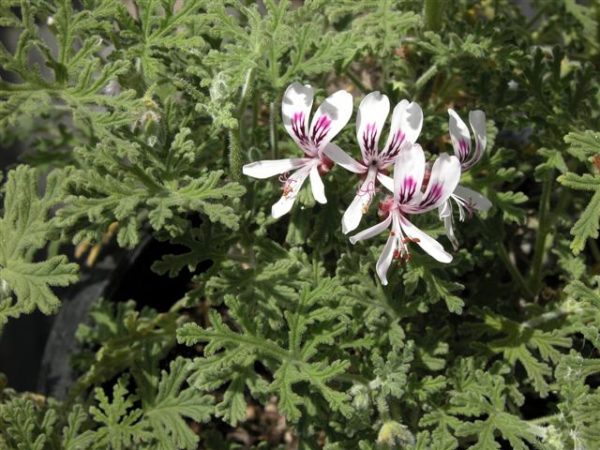

Apple cider
This plant gives off an apple aroma. His bushes are compact, leaves are light green with corrugated edges. The flowers are white or white-pink.
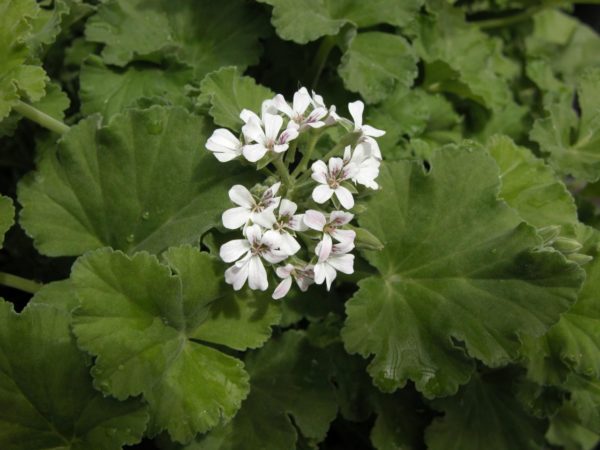

Robert's Lemon Rose
The peculiarity of the variety is that it emits a mixture of lemon-pink aroma. The leaves of the plant are large and green.
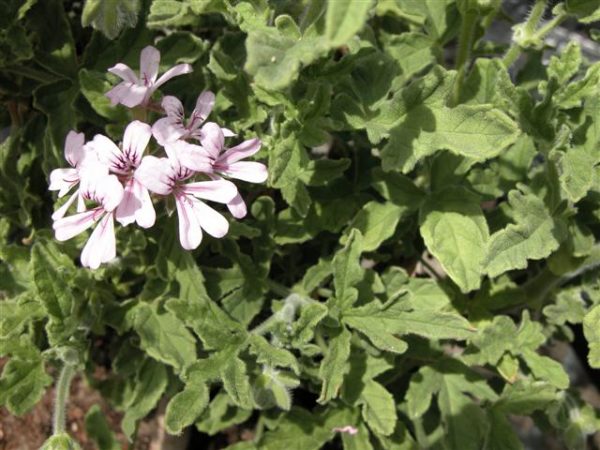

What does geranium look like
Readers are interested to know the description of what geraniums look like. It is an annual herb about 50 cm high. It has bright green leaves. They are large and have a pleasant lemon scent. They have a peculiar pattern in the form of a white border. Some varieties of geraniums have double and darker leaves. This may mean that the variety is elite. Geranium seed is large.
The plant blooms at different times. Flowers can have all kinds of colors. Some varieties don't smell. Fragrant geraniums exude a very pleasant smell, refreshing the premises. Especially beautiful are the flowers of pelargonium Silk swan, geranium Samobor, geranium Gourmet.
Where and how to plant it?
First you need to prepare the pot, focusing on the volume of the roots. The most suitable is a medium-sized pot., which has a diameter of 15 cm. If you take too large a container, then the planted plant will begin to fill the empty space with roots, as a result of which the decorative appearance of the flower will deteriorate.
A clay pot is perfect for fragrant pelargonium, since this material is perfectly air-permeable, so the air will not turn sour and waterlogged.
Planting is best done in spring. you can use both a purchased substrate and one prepared by yourself to fill the pot. The planted plant should be kept in a shaded place with a moderate temperature regime.
Content rules and tips
Scented geraniums are grown in pots or outdoors. Plants at home are a minimum of hassle, but street geraniums need to be replanted every fall. Without winter storage, it will die from the cold. If geranium is planted in open ground, it reaches a large size over the summer. Difficulties arise when transplanting.
Recommendation. Experienced gardeners recommend burying it in the soil along with the pot. This will save you from problems in the fall. Geranium needs fresh air, as soon as possible it is taken out to the balcony or terrace. In the cold season, it is advisable to ventilate the room.
How to choose a seat?
A plant accustomed to the African sun requires placement in the most illuminated place. This is the south side of the apartment. Geranium is not afraid of sunlight, but in the heat it is better to use a protective screen to protect foliage from burns. In winter, additional lighting is needed with lamps. The bush signals a lack of light with elongated shoots and pale color of the leaves.
What kind of soil is right?
Fragrant geranium requires light neutral soil. You can buy a ready-made soil mixture intended for growing these plants (Garden of Miracles "Geranium"). The soil contains a sufficient amount of sand and nutrients. Usually for growing perennials, the soil is prepared independently... It should contain several components:
- leafy land;
- sand;
- humus.
The ingredients are taken in equal proportions. Before use, the earth must be disinfected - heated in the oven, treated with a solution of potassium permanganate.
Fragrant geraniums are planted in small diameter ceramic pots... Expanded clay must be poured at the bottom for drainage. The plant is transplanted when the roots fill the entire space. The new pot should be 2-3 cm larger in diameter. The optimal time for the procedure is the beginning of spring. After transplanting, geranium does not need feeding for up to two months.
Advice. The roots sticking out of the drainage holes in the pot will help determine when to transplant.
Soil requirements
Scented geranium prefers to grow in light and neutral soil. You can buy a ready-made version - Geranium Garden of Miracles.
The soil should contain high concentrations of sand and nutrients.
For planting a perennial, you can prepare a soil mixture with your own hands, mixing the following components in equal proportions:
- leafy ground;
- sand;
- humus.
Before using a homemade substrate, it must be calcined in the oven and treated with a solution of potassium permanganate.
Photo
Check out the photo of geranium further:
Care
Temperature conditions


You can grow fragrant geranium not only at home, but also on the terrace and loggia.
It is important that there is no wind and draft. The optimal temperature regime for a plant is 18-20 degrees Celsius in summer and spring.
In autumn, the temperature should not be lower than 10 degrees.... At lower rates, the flower may die.
Watering
It is necessary to moisturize pelargonium regularly, but avoid overmoistening. Perform the next watering only after the soil in the container has dried. The plant does not make special demands on air humidity, therefore it grows well at high and low humidity.
Top dressing
In the spring, the crop must be fed with phosphorus fertilizers, and in the fall, potash compounds must be applied. During flowering, it is necessary to add phosphorus and potassium together. Iodine water has a positive effect on the growth of leaves and flowers. To prepare the solution, dilute 1 drop of iodine in 1 liter of water. In winter, there is no need to feed the plant.
Read more about the secrets of home care for fragrant geraniums in a separate article.
Geranium fragrant medicinal properties and contraindications
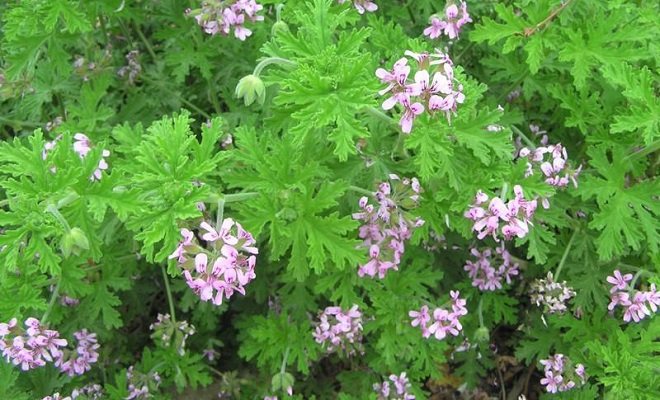

The beneficial properties of this plant have been known for a long time, and many traditional healers successfully use them in the treatment of such ailments as:
- gastritis and gastric ulcers;
- fever;
- insomnia;
- colds;
- radiculitis;
- hemorrhoids;
- gout;
- adrenal gland disease;
- inflammation of various types;
- arterial hypertension, etc.
For the manufacture of potions, fresh leaves of fragrant geranium are cut.Usually they are not dried, but simply washed under running water. In the future, medicinal decoctions, water and alcohol tinctures and extracts are made from these leaves. But to get rid of some symptoms and conditions, sometimes you don't even need to prepare any mixtures.
For example, to get rid of a headache, you just need to rip off a couple of leaves, fold them in four and, curling up with a tube, insert them into the ear opening with a sharp edge. After a while, according to expert healers, the pain will begin to subside.
And in order to normalize high blood pressure, it is enough to bandage 1 leaf of pelargonium to the back of each wrist.
You do not have to bother with the preparation of a drug to relieve symptoms of otitis media. To prepare effective drops, you need to cut off several leaves, chop them finely and, collecting them in a pile, squeeze through gauze into the prepared container. The sap of the leaves is collected with a pipette and buried in the ears. It's simple.
Diseases and pests
Fragrant geranium resists disease, but they arise due to improper care: high humidity, low acidity of the soil lead to the development of fungal infections. Excessive watering is fraught with the development of stem, root and gray rot.
Control methods:
- Root rot - makes the roots soft, and the stem - affects the petioles, as a result of which they become black and weeping. Gray rot can be recognized by bloom on leaves and peduncles. For treatment, the following drugs are used:
- Fundazol;
Fitosporin-M;
- Topaz;
- Gamair;
- Baktofit.
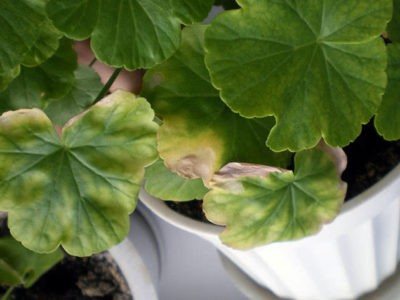

Mites... They can appear at high air temperatures. Insects live on the inside of the leaf, make punctures there and suck out the juice. As a result, the leaves become stained and curled. As soon as the parasites have been found, it is necessary to treat the plant with soap, wait 2-3 hours and rinse with water. In case of severe damage, chemical preparations are used:- Karbofos;
- Karate Zeon;
- Fitoverm;
- Anti-tick.
- Thrips and whiteflies... Sticky traps help get rid of them. Affected plants are treated with the following insecticides:
- Aktara;
- Actellik;
- Confidor.
In cuttings, black rot is not treatable. The infected flower must be thrown away and the soil must be sterilized.
Possible problems
Pests and diseases
A fragrant plant can be damaged by whiteflies, aphids, sometimes it is affected by rust. Most often, pests settle on young plants, affecting their leaves and shoots.
Special preparations (actellic, celtan, etc.) will help to get rid of pests. Stagnant water and frequent watering should be avoided to prevent rust.
Interested in such a wonderful plant as geranium? Then we invite you to familiarize yourself with other types and varieties of this beautiful flower, namely, Geraniums Angel, Roberta, Max Fry, Plenum, Black Velvet, Roseanne, Peony, Royal and Zonal.
Breeding features
You can propagate fragrant geranium by seeds, dividing the bush and cuttings.
Seeds
Most often, growers choose the method of propagation by cuttings, since the seed method is complex and troublesome, although with its help you can get compact and abundantly flowering bushes. Procedure:
- Prepare the soil, which will consist of peat, sand, turf soil (1: 1: 2).
- Treat the soil with a solution of potassium permanganate.
- Spread the seeds on the surface and sprinkle with a layer of earth. Moisten the soil with water at room temperature.
- Cover the container with glass or polyethylene to create greenhouse conditions. The room temperature should not drop below 20-22 degrees Celsius.
- As soon as the first shoots are formed, the covering material can be removed.
- The first leaves are formed in 1-2 months. Flowering will have to be expected next year.
Dividing the bush
It is necessary to divide the mother bush in the spring.... To do this, remove the adult plant from the pot and divide it into several parts, so that each of them has its own root and shoots. Plant the plants in separate pots.
Description of the fragrant geranium plant (with photo)
Fragrant geranium is a low herbaceous perennial with long branching stems. In the sources describing the plant, the variety is characterized as one of the easiest to care for. It can be grown both indoor and outdoor plants to decorate a garden, loggia or balcony. Fragrant geranium easily adapts to new growing conditions. A distinctive feature of the Fragrant species is the sharp specific smell that the hairs on the leaves of the plant exude during the vegetative period.
The rhizome of the variety is well developed, knotty. Herbaceous stems are formed from it, to which green leaf plates are attached with long petioles. The shape of the leaf is also unusual: it is dissected into several palmate lobes. The surface of the plate is covered with fine hairs, which, when in contact with them, emit a substance with an unusual aroma.
Fragrant Pelargonium - blooms and does it very willingly, usually for several months in a row. The buds formed during the active life cycle are collected in nondescript racemose inflorescences. The flower is white with a pinkish, barely noticeable tint. At this time, the plant exudes a very bright characteristic aroma. The smell of fragrant geranium depends on what kind of geranium it is.
Further in the photo, fragrant geranium is presented in various types of planting:
Use in traditional medicine
The use of geranium in medicine is associated with its anti-inflammatory effect. It is used, for example, for toothache. To do this, chew a geranium leaf or put it on a sore tooth. For children, crushed leaves are tied to the outside of the cheek, consumption inside is not recommended. This method is used even in babies during teething.
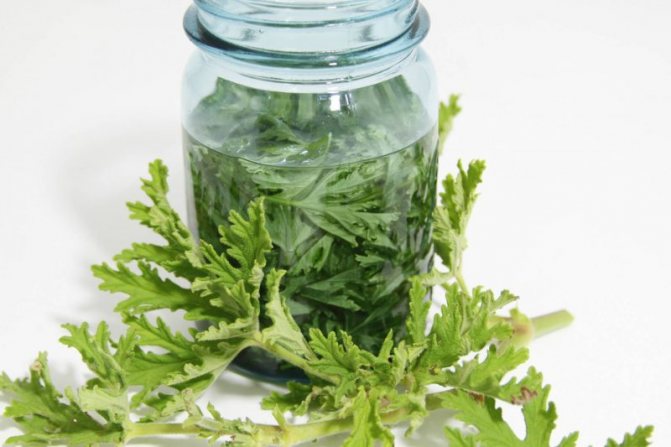

Geranium juice is added to water, gargle with ARVI and tonsillitis. It can also be instilled into the nose for a runny nose, sinusitis and sinusitis.
Decoctions from the leaves are used to treat:
- heart diseases;
- high blood pressure;
- gastritis;
- intestinal inflammation;
- urolithiasis.
Fresh and dried geranium leaves are used as medicinal raw materials. Crumpled leaves help soothe severe ear pain and relieve inflammation, even with chronic otitis media.
Compresses with crushed leaves are used for radiculitis and osteochondrosis, they are applied to a sore spot, and the pain quickly passes.
Geranium juice heals wounds and burns on the skin. With high blood pressure, the crumpled sheet is applied to the wrist, after a while the pressure decreases.
Lighting and location
Geranium is a flower that loves light very much. However, placing it in partial shade and in the depths of the room will not be a particular problem either. In addition, if the lighting is not enough, you can immediately understand this by the appearance of the plant. The leaves will become much lighter, the plant will stretch in height. When these signs appear, lemon geraniums should simply be placed in the sun for several hours once a day. Without enough light, pelargonium will not bloom.
In terms of location, the east or west side of the house is ideal. The best option is to place the flower on the windowsill.
However, it should be borne in mind that he is afraid of drafts, so they should be excluded as much as possible. Placing near a battery or under an air conditioner is also not a good idea.
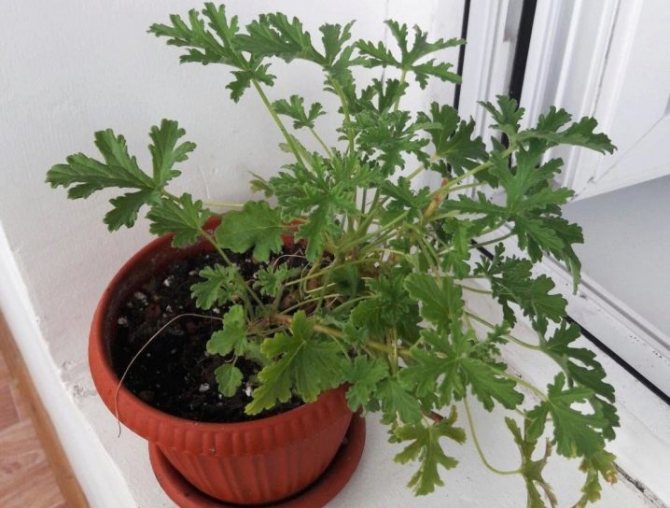

Medicinal qualities
Due to its rich chemical composition, this plant is actively used in traditional and folk medicine. Fragrant geranium has the following beneficial characteristics:
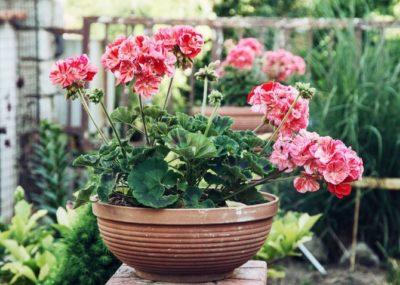

kills viruses, pathogenic microorganisms and harmful bacteria;- is a good antiseptic;
- stops bleeding;
- relieves pain;
- helps to heal wounds;
- has a tonic effect;
- relieves swelling;
- has antidiabetic properties;
- normalizes the work of the digestive tract, liver and kidneys;
- helps to strengthen the heart muscle.
Correct fit
To transplant pelargonium, you need to choose a flower pot that matches the size of the plant's root system. It should be just a couple of centimeters wider than the previous one.
In a spacious pot, geranium will develop poorly, there will be a risk of waterlogging. Root decay is possible.
To prevent moisture from stagnating, a layer of expanded clay is placed on the bottom. After transplanting, it is well watered to shrink the soil mixture.
Pelargonium fragrant differs from other types of geraniums in that it does not like acidic soil. Peat is contraindicated for her.
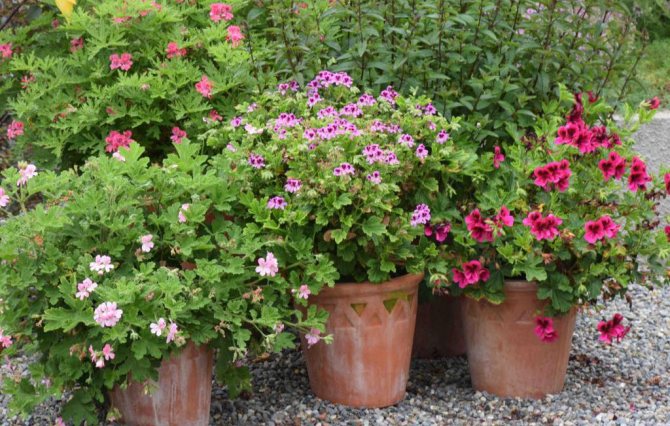

The correct composition of the soil will ensure the good development of the plant and its abundant flowering.
Lemon geranium does not bloom
Due to its beautiful appearance and exotic origin, lemon geranium will become a real decoration of your home.
Content:
Description of the geranium plant
Lat. Geranium
- decorative deciduous;
- ivy or balcony;
- fragrant;
- English, they are noble;
- epilepsy;
- headaches.
You can also pay attention to the sixth type - these are succulent pelargoniums, they have fleshy stems and an original appearance, for which they are often used in ikebana and bonsai compositions.
In the described flower, the leaves are oblong, lush due to their dissection, have a bright green color. With proper care, the plant grows up to half a meter in height, sometimes even taller. But it is believed that the decorative function is better performed by a young flower, while the trunks of the plant are not yet lignified. Such a plant looks very fresh and delicate.
But there are many types of scented geraniums (about 150). Its flowers can smell like mint, rose, apricot, apple, orange, lime, ginger, cinnamon, and even nutmeg or coconut. These species are often grown on window sills and balconies, as they serve not only to decorate the house, but also refresh the air with a wonderful peculiar aroma.
The described species blooms relatively rarely and modestly, all the charm of the plant is in luxurious greenery and delicate fragrance. With proper care, it blooms with light green or sparsely spaced white buds.
The healing properties of lemon geranium
In some cases, geranium serves as an antiseptic, hemostatic and wound healing agent. It is also used as an effective deodorant.
A geranium flower with a lemon scent on the windowsill can become your own mini-first aid kit for you. Its beneficial and medicinal properties contribute to this.
You need to put a flower on a windowsill where there is a lot of bright, but diffused light; in dark light, the plant will stretch out and turn pale.
Essential Lemon Geranium Care
Geranium breeders often face the problem of rare flowering and "correct" this deficiency with generous fertilization or bright daytime sun. This is not worth doing. The main reason for the lack of flowering of the described geranium is excessive fertilization and heat. Fertilizers can provoke the growth of luxurious green mass, but not flowering. The situation can be corrected by two days of abundant watering, this will help wash off fertilizers from the root system. After that, you immediately need to return to the usual irrigation regime without fertilizers.
Lovers of geranium flowers should remember that only zonal species prefer very bright light and, if there is not enough light, they stop blooming.
In the cold season, they even need extra lighting to stimulate their flowering. Other plant species should be placed in areas of partial shade, especially during the day and summer.
The described flower will tell you about insufficient lighting with its increased growth and pale leaves, by this it expresses the need for sunlight for at least 6 hours a day.
Taking care of lemon geraniums is not difficult, you just need to adhere to the basic rules of plant maintenance. Basically, it is worthwhile to properly monitor the lighting, hide the flower from direct sunlight, you do not need to water often, but regularly and not very abundantly, spraying is allowed only in extreme heat.
The percentage of soil acidity plays an important role when planting such a flower. The plant does not tolerate a decrease in soil acidity below 5.5 pH, otherwise the plant stops feeding. For normal nutrition of lemon geranium, the soil soil should be slightly acidic and equal to 6.5 pH.
Can I spray?
If geraniums are sprayed during flowering, the buds wilt and fall off. She pleases with flowering without spraying, subject to regular watering.
Caring for geraniums is a prerequisite if growers want to enjoy beautiful pink, white buds in the spring and summer. It does not take a lot of time. 15 minutes spent on weekly maintenance guarantees that there will be no problems with flowering.
If you find an error, please select a piece of text and press Ctrl + Enter.
Contraindications
The following categories of people are not advised to use geranium and preparations based on it:
- pregnant and lactating women;
- children under 12 years old and the elderly;
- in the presence of individual intolerance;
- with chronic diseases of the gastrointestinal tract, liver, kidneys;
- with thrombophlebitis and varicose veins;
- with low blood pressure;
- people suffering from bronchial asthma.
Before using the drugs internally, it is recommended to consult with your doctor.
Short description
Fragrant geranium is an unpretentious, fairly popular garden and indoor plant with a specific smell. The plant is a branched bush with a well-developed nodular rhizome. Leaves are carved, palmate-lobed. They are covered with fibers that, when touched, give off an intense aroma. The flowers are collected in umbrellas, small, inconspicuous, white-pink in color. It is the peculiarity of spreading an unusual strong smell that is the hallmark and the main value of fragrant geranium. In addition, the easy maintenance and its exceptional healing properties attract the attention of housewives and gardeners.
The chemical composition of the plant
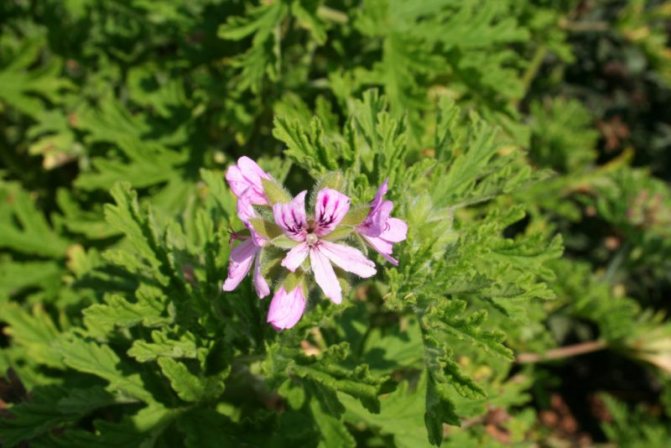

The chemical composition of geranium is very rich, the leaves and stems contain the following substances:
- essential oils;
- organic acids;
- starch;
- Sahara;
- pectin;
- mineral salts;
- anthocyanins;
- vitamins;
- geranine, etc.
The plant contains no toxins, alkaloids, toxic substances, it cannot cause poisoning.
Comments (4)
Tatyana
12.09.2017 at 13:15 |
I associate lemon geranium with fragrant geranium. Perhaps they are the same species? This species is very helpful in case of ear diseases, and it is not difficult to grow it, it is a very unpretentious plant.Reply
Julia Expert Plodogorod
26.08.2019 at 15:35 |
Hello Tatiana! You are absolutely right, lemon geranium is a kind of scented. This plant really has many medicinal properties and is used for otitis media, colds, headaches and some other problems.
We would like to note that despite all the benefits of such a flower, infusions, decoctions and other derivatives from it can only be used as an adjuvant and do not replace the main treatment. It should be used with caution by people who suffer from allergies.
In addition to medicinal properties, geranium of this variety has a very pleasant, delicate smell. For this reason, it is recommended to grow it in the bedroom, as, according to reviews, the aroma exuded improves sleep.
Despite the fairly easy care, due to non-observance of the basic rules, the flower loses its decorative effect.From a lack of moisture, the edges of the leaves may begin to turn yellow. This usually happens with those shoots that are located at the bottom of the plant. But, if the crown began to turn yellow and the flower generally looks sluggish, most likely the reason is in excess of watering.
In the described case, it is worth normalizing the humidification regime. You can slightly loosen the soil in the pot to speed it up. If there is no improvement, a transplant may be required. In the process, it is worth examining the rhizome for rotting. The softened and rotten parts are cut to healthy tissue.
In addition to the direct excess of moisture, a too narrow pot can lead to the described consequences. But, too large a container is also not worth choosing. In this case, geranium will begin to spend energy on growing rhizomes, which will affect its decorative effect.
If the geranium does not bloom, then the reason may be insufficient lighting. In such cases, the foliage becomes pale, and the shoots are elongated. Buds will not appear if the plant is cold.
Excess nitrogen can also be a problem. In this case, not only may there be no flowering, but also a fungus may develop.
To geranium, like to any other plant, you need to adapt. If you keep the balance when watering, lighting and feeding, this culture will delight you with its lemon scent and delicate flowering.
Reply
Ira
14.04.2018 at 00:16 |
For the first time I hear about lemon geranium, I can't get ordinary geranium, neither where they sell it with us and my friends don't, I decided to order it in an online store, and now I don't even know which type of geranium to choose.
Reply
Julia Expert Plodogorod
26.08.2019 at 16:08 |
Hello Ira! If you choose an indoor variety, then in such conditions red, white, fragrant, as well as ampelous varieties of pelargonium grow well. Since there is no way to get a cutting, we recommend using the seed propagation method of geraniums.
When you receive the material for planting, it needs to be inspected, it is important to make sure that there is no hard shell on the seeds. If preliminary cleaning has not been carried out, you will have to do everything yourself using sandpaper.
There is no specific time when it is worth planting the described culture. But, if you do not plan to use additional sources of lighting, for example, phytolamps, it is better to plant in early spring. Then daylight hours will increase in proportion to the needs of the sprouts.
To improve the germination of the planting material, it is better to soak it in not cold water before planting. The exposure time is 2-3 hours. For greater effect, Epin or another stimulant can be added to the moisture.
To protect the culture from various fungal diseases, you can pre-hold the seeds in a solution of manganese or boric acid for about half an hour. After such treatment, it is better to rinse the planting material, and then put it in a stimulating solution.
For sowing seeds, you can use a box or glasses. The soil should be very light. You can take sod land as a basis, into which you add peat and a little sand. We recommend additionally disinfecting the soil mixture by watering it with boiling water, manganese solution or Fitosporin.
Regardless of the container, holes must be made in the bottom for moisture outflow, and then a drainage layer must be laid. It can be either purchased expanded clay or scrap materials. For example, old sawdust, shells, small stones are suitable.
If planting is carried out in a box, you must immediately observe the distance between the seedlings at least 4.5-5 cm.When planting in glasses, it is better to put one grain there. In case one of them does not germinate, it is better to try again than to remove the extra shoots.
The fact is that in the process, you can easily damage the root system, not to mention the fact that the flowers will compete for nutrients.
After sowing, the soil is moistened with a spray bottle, and the beds are covered with plastic wrap.In the future, you need to water the plantings as the soil dries up and ventilate such a greenhouse.
The first green seedlings will start to appear in 15-20 days. The pick is carried out in separate containers when 3-4 leaves are formed on the seedlings.
Reply
Application of geranium oil
As a medicine, geranium oil has been known since ancient times. It has bactericidal, antispasmodic, soothing, tonic, wound healing, anti-inflammatory and antidiabetic effects. Due to its bactericidal properties, geranium oil is used in the treatment of some infectious diseases. Geranium bactericidal activity ranges from 125-400 μg / ml. Actively against mycoplasma pneumonia. Has a positive effect on the phagocytic activity of macrophages (5 μg / ml). Stimulates the adrenal cortex.
This essential oil contains more than 120 components, mainly terpenoids. Its antimicrobial and antiviral activity is 6.5 times higher than that of phenol (carbolic acid), which is considered to be the strongest antiseptic
.
Geranium oil increases efficiency, increases attention, improves brain vascular tone, relaxant. Effective for burns, wounds, fractures, frostbite, dermatoses and stomatitis. Used in diabetes mellitus. Stimulates the function of the liver and pancreas. Effective in the form of drops and ointments for otitis media, sinusitis, tonsillitis.
It is a good antiseptic, gentle on the skin and does not cause irritation. It, like tea tree essential oil, is recommended to be applied externally in the form of ointments for shingles and chickenpox.
Ointments with geranium essential oil are a good remedy for eczema and dermatitis, poorly healing wounds, cuts, scratches, as well as for acne and acne. Geranium is very active against candidiasis.
Outwardly, in a mixture with warming oils, it is used for arthritis and myositis.
In aroma lamps they are used for asthenia, neurasthenia and other functional disorders of the nervous system. Geranium aroma has a regulatory effect, weakening the response to stress. This action is associated with the regulation of the production of stress hormones. Essential oil has a regulating effect on the cardiovascular system, normalizes blood pressure and heart rate. Not being a hormone, rose geranium essential oil has a harmonizing effect on the endocrine system, especially in women. Therefore, in the form of inhalation, oil is useful for PMS and dysmenorrhea.
This oil, like rose or lemon oil, can be taken orally 1-2 drops. It has a regenerating effect on the liver.
Russian scientists have tested the effectiveness of the properties of geranium oil experimentally. A few drops of a liquid containing millions of staphylococci were applied to the surface of a leaf of room pelargonium, and after 3 hours most of the bacteria died. The bacteria applied to the nutrient medium were placed at a distance of 0.5-1 cm from the leaves of pelargonium, and after 6 hours they all died.
Clinical studies have confirmed that staying for 10 minutes next to a flowering pelargonium bush (at a distance of 60 cm) has a beneficial effect on the functional state of the central nervous system: it soothes and improves sleep. The neighborhood with pelargonium is useful for people with neurotic reactions, insomnia, hypertension, cardiovascular and gastrointestinal diseases. It has a particularly good effect on patients with chronic gastritis with high acidity.
Contraindications: Geranium oil is not toxic, but in very rare cases, individual intolerance and allergic reactions occur.
And a little about the secrets of the Author
Have you ever experienced unbearable joint pain? And you know firsthand what it is:
- inability to move easily and comfortably;
- discomfort when going up and down stairs;
- unpleasant crunching, clicking not on their own;
- pain during or after exercise;
- joint inflammation and swelling;
- unreasonable and sometimes unbearable aching pain in the joints.
Now answer the question: does this suit you? How can you endure such pain? And how much money have you already "poured" on ineffective treatment? That's right - it's time to end it! Do you agree? That is why we decided to publish an exclusive interview with Oleg Gazmanov, in which he revealed the secrets of getting rid of joint pain, arthritis and arthrosis.
The appeal of geranium, or pelargonium, is in its delicate leaves. One has only to touch them, as a strong aroma appears. Fragrant geranium is a beautiful attribute of a cozy home and a unique home doctor.
Fragrans Group. Varieties of Pelargonium fragrans
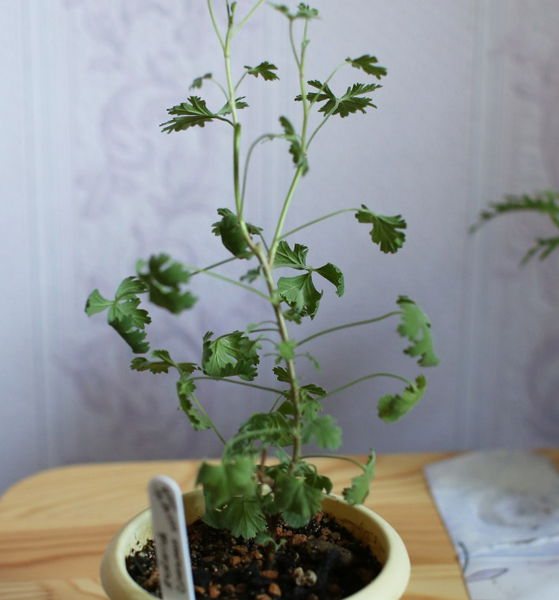

Ardwick Cinnamon.
Fragrans Variegatum is a subshrub up to 15 cm tall, often with reddish stems, leaves are velvety, three-lobed, obtuse-toothed along the edge, light green, chartreuse edging, with a spicy aroma. The flowers are white, collected in inflorescences of 4-8, two upper petals with small red stripes.
Lilian Pottinger - 25-30 cm in height and 12-16 cm in width, leaves are gray-green, irregularly three-lobed, serrated along the edge, with a complex aroma of camphor and pine. In summer it forms many white flowers with small red markings on the upper petals.
Ardwick Cinnamon - with fine velvety dull green foliage with a scent of cinnamon and white flowers with crimson marks on the top petals.

